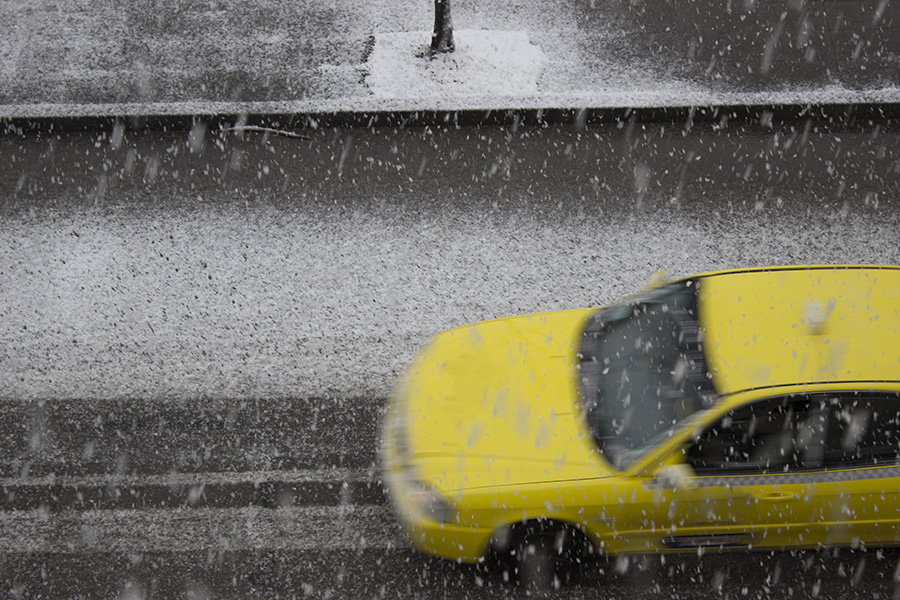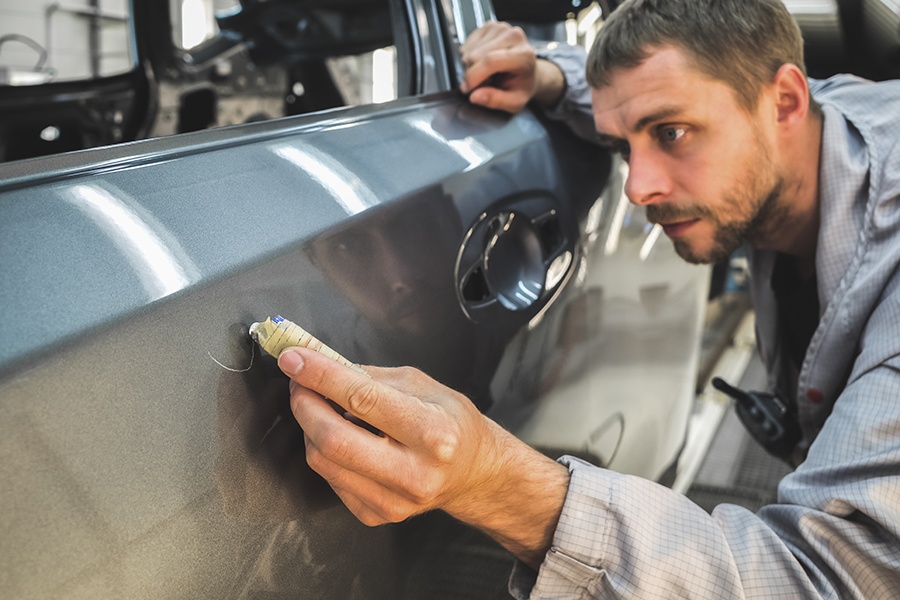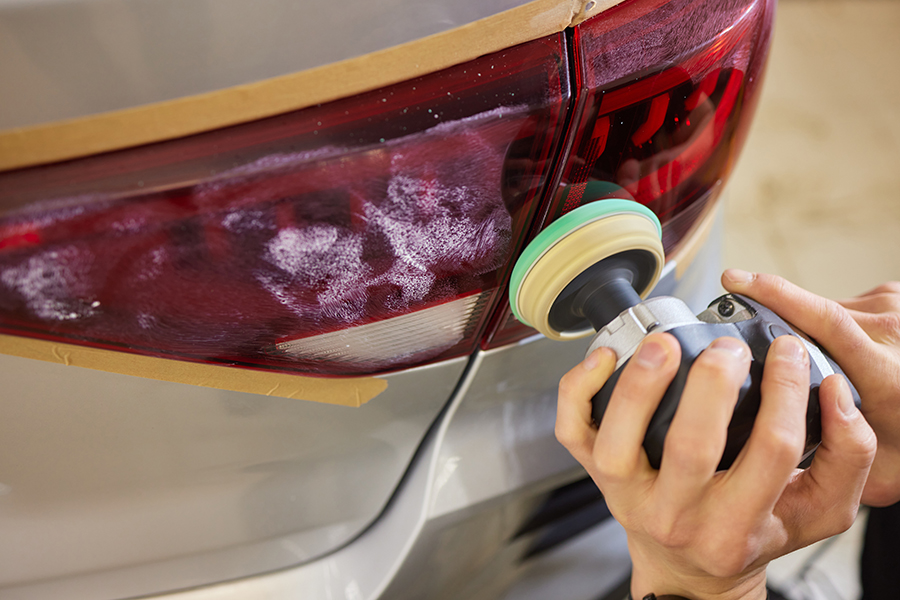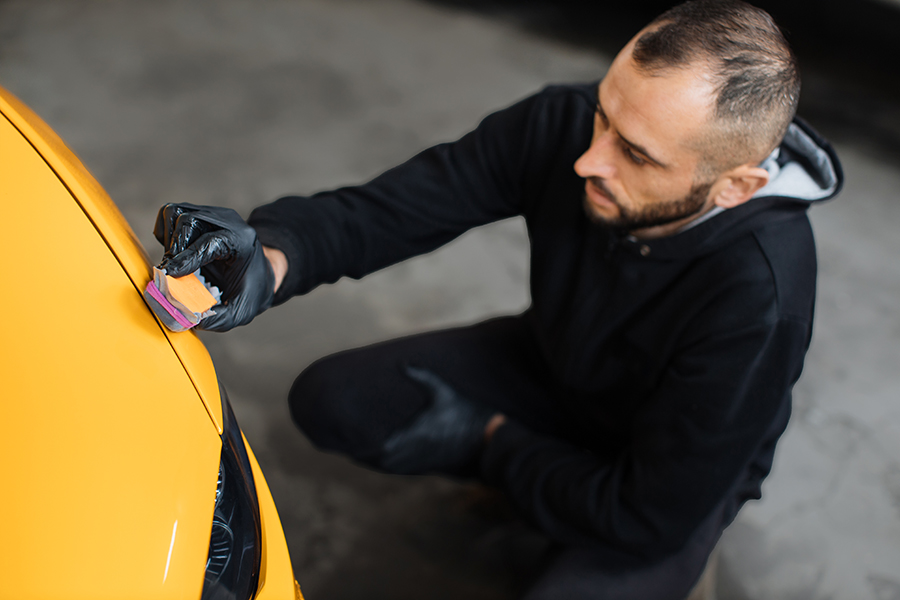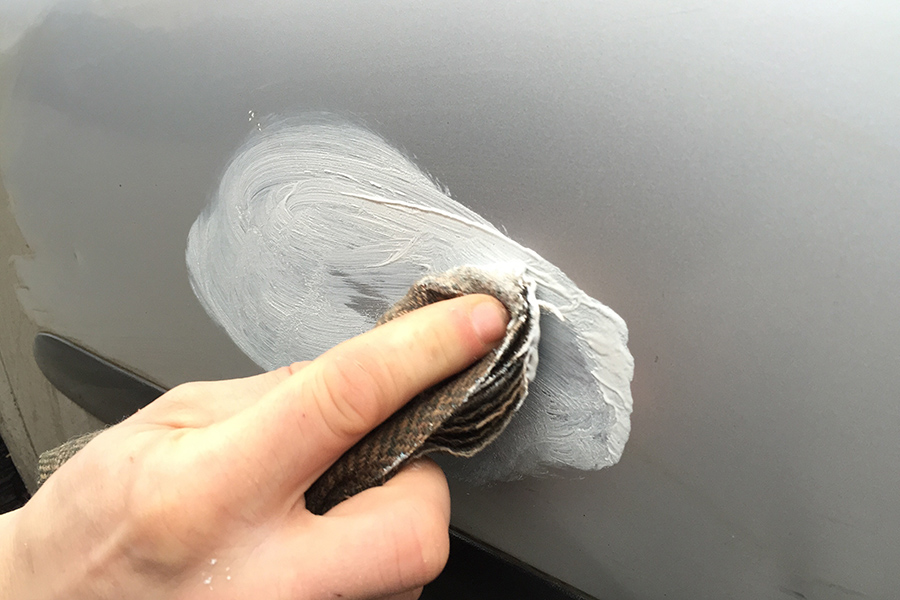Hail storms have been wreaking havoc on homes and vehicles for centuries, leaving behind a trail of costly damages. In the past, communities would have to endure long periods of recovery, but today's hail damage repair techniques are swift and efficient, ensuring that the aftermath of a storm doesn't linger longer than necessary. Whether it's your roof showing signs of distress or your car bearing the brunt of nature's fury, understanding the essentials of hail damage repair is crucial. This post dives into modern solutions and preventative measures to shield your property from future storms, making sure you're well-equipped to handle whatever the skies throw your way.
Key Takeaways
- Check your car for damage after a hail storm to know if you need repairs.
- Call your insurance quickly to see if hail damage is covered.
- Look for a good repair shop that knows how to fix hail damage.
- Ask the repair shop how much it will cost and how long it will take.
- Make an appointment to get your car fixed as soon as you can.
- Try to keep your car safe from hail in the future to avoid more damage.
Understanding Hail Damage
Causes of Hail Damage
Hail damage happens during thunderstorms. These storms drop hailstones on cars and roofs. The size of the hailstone matters a lot. Big hailstones cause more harm than small ones.
e places see hail more often. If you live there, your car or house might get hit by hail more.
Common Signs to Look For
After a storm, you might see dents on your car. This is a sign of hail damage. The dents are where the hail hit your car.
Windows can also break or crack from hail. This is another sign to watch for. Side mirrors and lights can get damaged too. Check these after a storm.
Impact on Vehicle Value
Hail damage can lower your car's value. This means it might sell for less money later on. When you try to trade in your car, the offer might be lower because of the damage.
Repairing hail damage can be costly. Sometimes, it costs a lot to fix all the dents and broken parts.
Immediate Steps After Hail Damage
Assess the Damage
Once you know what hail damage looks like from the previous section, it's time to check your vehicle. Look over every part of your car. Do this in a place with lots of light. It makes it easier to see the dents.
You should look for marks of all sizes. Some might be big, and others small. Write down how big and deep they are. This info is very important later.
Document with Photos
Next, grab your camera or phone. You need to take pictures of the damage. Make sure these photos are clear. Try to get shots from different sides to show all the dents.
It helps to put a ruler next to the damage when you snap a photo. This shows how big the dents are. These pictures will be very useful soon.
Contact Your Insurance
Now, it's time to call your insurance company. Tell them about the hail damage. They will ask for details, so give them what you wrote down and the photos.
They have a special way to handle claims like this. Follow their steps carefully. They will guide you on what to do next.
Types of Hail Damage Repairs
Paintless Dent Repair (PDR)
After a hailstorm, your car may have small dents. Paintless Dent Repair (PDR) is a good choice for these minor dents. It keeps the car's original paint safe. This method is often faster and costs less than other repairs. Many people choose PDR because it doesn't change the car's look.
PDR works well when the paint has not cracked. It uses special tools to push the dents out from behind. Most times, this repair can be done in one day. This makes it a popular option for hail damage repair.
Traditional Dent Removal
For cars with big dents or scratches, Traditional Dent Removal is needed. This process includes sanding down the damaged area and repainting it. It can fix severe damage caused by hail. But, it takes more time and money than PDR.
The steps involve filling the dent, sanding the surface smooth, and then painting. Matching the car's original color can be tricky. This method may take several days to complete. It's best for cars that have paint damage or large dents.
DIY vs Professional Repair
e people might try to fix hail damage themselves to save money. But, DIY repairs can end up looking bad if you're not skilled. You might need special tools that are expensive or hard to use right. Doing it wrong can lower your car's value.
Hiring professionals ensures quality work. They have the right tools and know-how to fix hail damage properly. Before you decide, think about what tools and skills you need for the repair.
Professionals can tell which method is best for your car's damage. They help make sure your car looks good as new again.
Cost of Hail Damage Repair
Factors Affecting Cost
The cost to fix hail damage can change a lot. It depends on how bad the damage is. Also, the way you choose to fix it matters. Where you live and how much people charge for work there also play a big part.
If your car gets hit by hail, small dents might not cost much to repair. But if the hail was big and made lots of dents or broke things, it will cost more. The method used to fix the car can make the price go up or down too. Some ways are cheaper but might not look as good. Other ways cost more but make the car look like new.
Labor rates are different in each place. In some cities, fixing your car might cost more because people charge more for their work.
Average Repair Costs
Fixing hail damage doesn't have a fixed price. It changes based on a few things.
For small dents, you might pay between $50 and $150 for each one. This is when the damage isn't too bad. But if your car got hit hard by hail, fixing everything could be pricey. It can go from $500 to even $2000 in severe cases.
Prices also change depending on where you are. Some places have higher costs for this kind of repair. Different shops might ask for different amounts too.
Insurance Coverage
Good news is, if you have comprehensive car insurance, it often pays for hail damage repairs. But, it's important to check how much your deductible is. This is what you pay before your insurance helps out.
Also, know what your policy covers exactly. Some plans have limits on how much they'll pay for hail damage repair. Make sure you understand your insurance so there are no surprises.
Finding a Repair Center
Local vs National Shops
Choosing between a local shop and a national chain for hail damage repair is crucial. Local shops often give personalized service. They know your community well. This can make you feel more at ease.
National chains, like Service King, offer standardized pricing. This means you might find the same rates across different locations. They have a clear repair process that they follow everywhere.
It's smart to compare what each offers. Look at their services and read reviews from other customers. This helps you pick the best place for your car.
Checking Reviews and Ratings
Reviews and ratings are like gold when picking a repair center. You can find customer feedback online easily. Sites like Google and Yelp have lots of reviews.
Don't forget to ask people you know for recommendations. Friends and family might have good suggestions. They can tell you about their experiences with different repair shops.
Questions to Ask
Before choosing a repair center, ask some important questions. Find out what repair methods they use. This tells you how they fix hail damage. Some methods are better than others.
Ask about warranties and guarantees too. Good repair centers stand by their work. They offer warranties to prove it.
Lastly, ask how long the repairs will take. Knowing the estimated repair time helps you plan ahead.
Scheduling Your Appointment
How to Book Online
Once you've found a repair center, it's time to book an appointment. First, visit the shop's website. It's easy and fast. Next, look for an appointment form. Fill it out with your details and the issue with your car. Make sure everything is correct before you send it. Then, wait for a confirmation. You'll get this via email. It will tell you the date and time of your appointment. Keep this email safe. You might need it later.
What to Expect During Visit
Your visit will start with a look at your car's damage. The experts will check every part that hail hit. They know what to look for. After the inspection, they will talk to you about how to fix it. They have many ways to repair hail damage. They'll suggest the best one for your car. Then, they will tell you how much it will cost and how long it will take. This estimate helps you plan.
Preparing Your Vehicle
Before your appointment, do a few things to get your car ready. First, take out all personal items from your car. This makes the repair easier and keeps your things safe. Next, clean your car's outside. Dirt can hide some damage, so a clean car is easier to inspect. Lastly, make sure they can get to your car easily. If the repair team can start right away, it saves time.
Getting an Estimate
Requesting a Quote Online
After scheduling your appointment, the next step is getting an initial estimate. This can often start online. Provide detailed damage information about your vehicle to the repair shop. It's helpful to upload photos if possible. These images give the shop a good look at what they're dealing with.
You then wait for a response. The shop will review the details and pictures. They send back an estimate of how much repairs might cost. This number gives you a starting point. It helps you understand what you might pay.
On-Site Inspection Details
An on-site inspection gets more precise. A technician looks over your vehicle closely. They check every part that has hail damage. This is where they make a detailed damage assessment.
After checking everything, they finalize the repair plan. They also tell you exactly what it will cost. This final estimate can be different from the original one you got online. Sometimes, it's more because they find more damage up close.
Comparing Multiple Estimates
It's smart to not just go with the first estimate you get. Try to gather quotes from different shops. This way, you see a range of prices and services offered.
When comparing, look at what each shop offers for their price. Also, consider reputation and experience of each place. Some might charge more but do better work or offer extra services like a loaner car while yours is being fixed.
Insurance and Hail Damage
Filing a Claim Process
After a hailstorm hits, the first step is to submit a claim form to your insurance. This form tells them you have damage. You need to fill it out right. Then, gather all the proof of your damage. Pictures and notes about what happened help a lot.
Next, send in any papers they ask for. This could be reports or repair estimates. After sending everything, call them. Ask if they got your papers and what comes next. It's key to keep in touch with them so things move fast.
Working with Adjusters
Once your claim is in, an adjuster will want to see the damage. Set up a time that works for you both. When they come, show them every place that got hit by hail. This includes your roof, which might have taken a big hit.
Talk about how to fix things and how much it might cost. Adjusters know a lot about repairs. They can tell you if fixing your roof or replacing it is better. For roofs with asphalt shingles, this talk is very important. These shingles can get ruined by ice and hail, so knowing what to do next is key.
Understanding Your Policy
Before anything happens, know what your insurance covers for hail damage. Some policies cover lots of damage types, but others might not cover hail at all. Find this out by reading your policy well.
Also, know your deductible. This is what you pay before insurance pays the rest. If the damage cost is close to your deductible, think hard about filing a claim.
Lastly, check if there are limits or exclusions in your policy. Some policies won't cover certain types of roofs or older roofs. Knowing this helps avoid surprises later.
Preventing Future Hail Damage
Use of Car Covers
Car covers can shield your vehicle from small hailstones. They are simple to use and can be easily stored in your trunk. This makes them a great choice for everyday protection. However, they might not hold up against larger hailstones. It's a good idea to invest in a quality cover that offers thick padding for better defense.
Parking Strategies
Finding the right spot to park is key during hail season. Always try to park in covered areas, like garages or carports, when you can. This is one of the best ways to keep your car safe. Parking under trees might seem like a good idea, but it's risky. Branches can fall and damage your car during a storm. So, it's smarter to avoid trees and use garages, especially if there's hail in the forecast.
Weather Alerts and Precautions
Staying ahead of the weather is crucial. Make it a habit to check weather reports every day. You can also sign up for hail alerts on your phone. This way, you'll know when to take action to protect your car. If you hear about an upcoming hailstorm, move your vehicle to a safe place as soon as possible.
Final Remarks
Navigating the aftermath of hail damage can seem like trekking through a storm, but armed with the right info, you're more than equipped to handle it. From understanding the nitty-gritty of hail impacts to getting your ride back in tip-top shape, we've covered the bases. Remember, the key steps—spotting the damage early, choosing the best repair path, and working with insurance—can turn a headache into a smooth ride. It's all about taking action swiftly and smartly.
Let's not wait for the next hailstorm to catch us off guard. Take steps today to protect your vehicle and ease future repairs. Whether it's finding a trusted repair center or exploring preventative measures, staying proactive is your best defense. So, gear up, get informed, and drive confidently into clear skies ahead. Ready to tackle hail damage head-on? Let’s roll!
Frequently Asked Questions
How do I know if my car has hail damage?
If your car's been kissed by hail, you'll notice dings and dents, especially on the roof, hood, and trunk. It's like the car's got acne - not a pretty sight.
What should I do immediately after noticing hail damage on my car?
Act fast! Cover your car to prevent more damage, then snap some photos for evidence. Think of it as documenting a crime scene but for insurance purposes.
Are there different types of repairs for hail damage?
Yes, indeed. It's like choosing between a band-aid or stitches. For minor bumps, paintless dent repair is your go-to. Major damage might need a bit more TLC with traditional bodywork.
How much does it typically cost to repair hail damage on a car?
It's like asking how long a piece of string is - it varies. Minor fixes can be cheap, but extensive damage can cost a pretty penny. Think hundreds to thousands.
How do I find a reputable repair center for hail damage?
Do your homework. Look for reviews as if you were finding the best pizza in town. A good reputation and experience with hail damage are key.
Will my insurance cover hail damage repair?
Most of the time, yes, if you've got comprehensive coverage. It's like having an umbrella for a rainy day - it's there when you need it.
Can I prevent future hail damage to my car?
While you can't control the weather, you can be smart about it. Use covered parking or car covers as your shield against the sky's mood swings.
